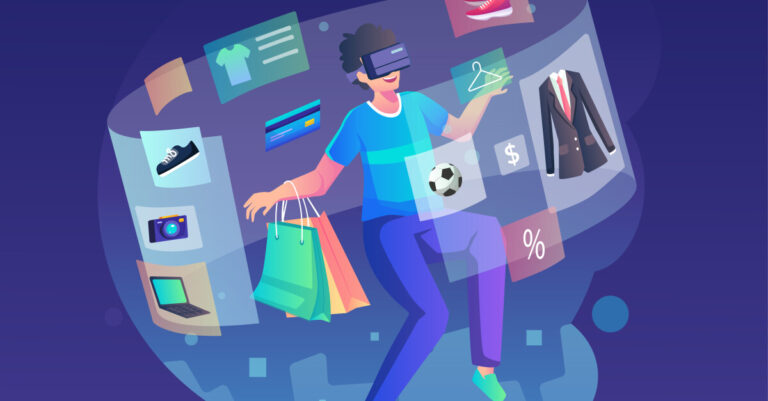
Source: news.google.com
member article
Omnichannel is not a new concept in retail, especially after the COVID-19 outbreak. Brands can no longer rely solely on the physical in-store experience as consumers flock online to shop. Today’s shoppers expect a unified and personalized experience, with consumers 76 percent more likely to buy from brands that personalize customer interactions across all touch points. This means that building a true omnichannel shopping experience is no longer a nice thing, it has become a strategic priority.
Offline and online coexist
As e-commerce came to life and forever changed the retail landscape, questions were raised as to whether online shopping would mean the end of brick-and-mortar stores. However, recent years have shown that it is not about online or offline; instead, both worlds coexist and complement each other.
Online shopping has skyrocketed in recent years, accelerated by the pandemic. According to UNCTAD, the average proportion of internet users worldwide who shop online rose from 53% in 2019 to 60% in 2021. Some countries even experienced a steeper increase, such as the United Arab Emirates, which doubled from 27% to 63%.
Despite this trend, physical stores remain a strategic distribution channel for retailers. In fact, nearly half of US consumers prefer in-store purchases to online purchases, attributed to factors such as the ability to see and feel products before purchasing. Also, the retail sector is now experiencing a reversal of what happened during the pandemic. In-store sales are growing at a faster rate than online channels. But consumers no longer want to shop only offline or only online; they expect a smooth, fluid, and highly integrated experience from both.
Given the shift in consumer behavior, retailers that invest in a strong omnichannel strategy enjoy a competitive advantage over pure online/offline players. For one thing, they can achieve higher revenue as omnichannel consumers shop more frequently. According to McKinsey & Company, in the apparel category, omnichannel customers shopped 70% more often and spent 34% more than pure offline shoppers.
On the other hand, physical retailers tend to attract more customers organically than online-only players. This translates into less investment in paid marketing and better results.
Global retail giants are already playing the omnichannel game. The previously online-only Amazon brand joined the physical playing field with Amazon Go and Amazon Fresh. Equipped with technology like Artificial Intelligence (AI), multiple sensors, and state-of-the-art CCTV cameras, these stores allow customers to shop without the hassle of paying. In return, the company can track consumer habits, send corresponding offers and discounts, and offer a personalized shopping experience.
augmented reality shopping
Consumers should be the focus of any omnichannel approach, and Augmented and Virtual Reality (AR/VR) is the vehicle for brands to become more consumer-centric. According to Eclipse, 71% of consumers say they would shop more often if they could use AR.
AR/VR bridges the gap between in-store and online purchases. With the help of artificial intelligence and machine learning, brands can now engage with consumers in ways never seen before. The pandemic has fostered a new demand in retail: the ability to see and feel a product on a digital platform. With stores closed, the live in-store experience had to go virtual, and AR/VR is the perfect solution to meet this new demand.
Global brands are starting to take advantage of technology. Ikea is already incorporating AR/VR into its strategy. With its mobile app, the company allows customers to scan their rooms and digitally place furniture in their homes with real-time personalization, browsing through 2,000 catalog items from the comfort of their own homes.
Metaverse for retailers?
Metaverse, a current buzzword, refers to an “integrated network of 3D virtual worlds” accessible through a VR headset. It is an emerging space where people can shop, be entertained, and it blurs the lines between physical and digital life. Given its potential, the metaverse is expected to power the next evolution in omnichannel retail, with AR/VR being the key vehicle for that journey.
Big brands like Ralph Lauren and Gucci are already well on their way to exploring a new business model called “Direct to Avatar” (D2A), where they will sell products directly to avatars – the consumer’s digital personas in the metaverse. Their products are no longer made of atoms, but of bits and pixels.
Even the catwalk has made its debut in the metaverse. The first Metaverse Fashion Week took place in March, featuring luxury brands and household names. Now it is possible for consumers to sit down the runway, try on and buy any outfit they like in a matter of seconds, all in the virtual world. Companies will not only sell products in the metaverse, but will also offer new worlds of virtual experiences to their customers.
With the incredible success of AR/VR games like Minecraft, Fortnite, and Roblox, the next generation of consumers will be familiar and comfortable with virtual worlds. It’s only a matter of time until they want to see their favorite brands in the metaverse. Major tech players have already invested billions of dollars to make the metaverse an indispensable part of e-commerce. Therefore, a good starting point for companies looking to engage with consumers in the metaverse is to build their resource pool that involves AR/VR, 5G internet, blockchain, crypto, and non-fungible tokens (NFTs).
It’s only a matter of time until the metaverse becomes the new playground for retailers. Those brands that have planned ahead will take the lead.
This was posted on the Bdaily members newsfeed by Julia Vockrodt.
Read More at news.google.com